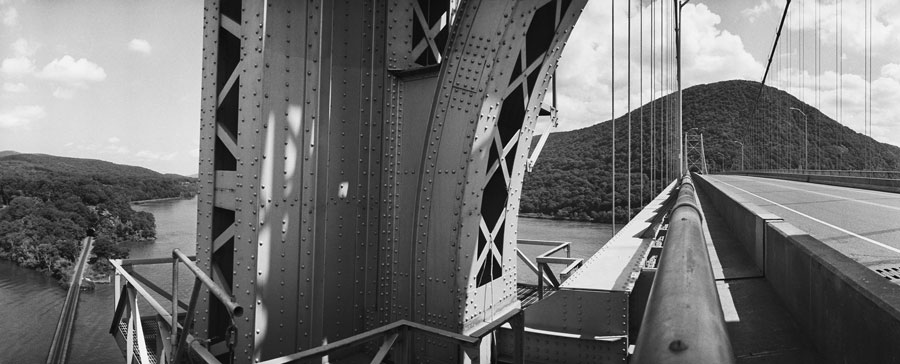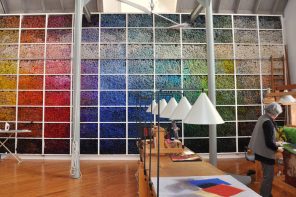The Hudson River Valley’s Palisades, mountains and autumn leaves have inspired generations of artists, but what about its manmade elements?
New York City-based photographer Harry Wilks has spent decades capturing the steel and concrete bridges, as well as railroad tracks, that helped connect and grow both New York City and the Hudson Valley. Through his lens — with photographs spanning the George Washington Bridge up north to Poughkeepsie’s Mid-Hudson Bridge — Wilks aims to catalogue the “interaction between the natural world and manmade structure,” as he describes in his artist statement.
A number of these photographs are on display at the Hudson River Museum in Yonkers in “Harry Wilks: Hudson River Bridges” (through Oct. 14). The photographs frame the bridges’ often stunning natural surroundings with the structure’s girders, rails and cables.
“The Hudson,” Wilks writes, “becomes something more than just a beautiful river because of the bridges that cross over it, and the roads and train tracks along its banks. By emphasizing the manmade elements, which sometimes loom large in the foreground, as well as by moving in close with a wide-angle lens, I alter the scene and create a sense of place that is realistic but also personal and strange.”
Wilks first started photographing the bridges in 1992. Before that, he spent decades photographing New York City from its rooftops. As described on his website, his photos explore “the quirky rhythms of urban and manmade rural environments.”
Security concerns following the terrorist attacks on Manhattan on 9/11 made the city’s roofs inaccessible, so Wilks concentrated his work on the ground. He’d hop in the car and “go to places I enjoy being, which is often where there’s water, railroad tracks and bridges.”
Speaking with WAG about the series, he points to a photograph he took from Bear Mountain Bridge in 2008. The bridge, as any driver can note, has stunning views of Bear Mountain State Park to the south and the start of the Hudson Highlands to the north.
“The Hudson Valley is a beautiful landscape,” Wilks tells WAG. “But I have to find something that’s made by man. Man’s presence has to be in the picture.”
In this photograph, Wilks uses the whole bottom third of the frame for a pattern of rivets on one of the suspension bridge’s steel plates.
“That’s how important the structures are to me, that I put that much of it against the landscape,” Wilks says.
Bear Mountain Bridge is a particular favorite. He praised its classic design from more than 90 years ago, its majestic view and the pedestrian walkways that make it easily traversable by foot.
Wilks shot much of the series on a Widelux camera, which captures a full panoramic view through a pivoting lens. The series includes color and black-and-white photography. He shifted to digital in the mid-aughts but shot only in black and white before then. Still, some more recent photos are in black and white. He says he uses color only if it adds to the photograph.
The collection includes shots of the Tappan Zee Bridge, as well. As for it’s replacement, the Mario Cuomo Bridge, Wilks says he hasn’t had a chance to explore it just yet. He’s waiting on pedestrian pathways for the bridge to open. After that “you’ll find me there.”
For more, visit hrm.org and harrywilks.com.





